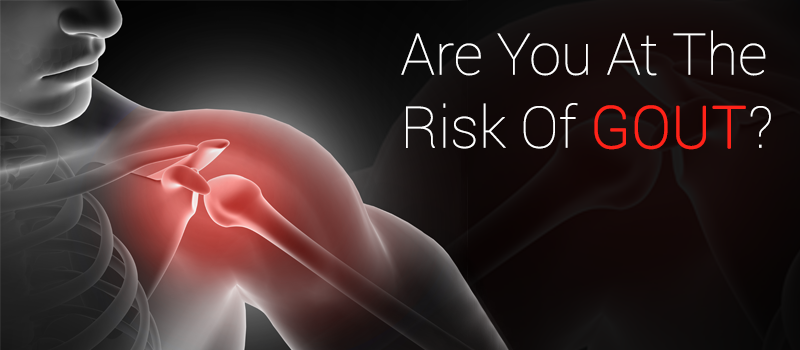At times we often ignore what body tends to say about unusual changes happening deep inside us. This ignorance may worsen the situation, leading to other complications that aren’t easy to handle. Signs such as swelling, numbness, painful toes that are sometimes considered to be normal can be alarming signs of “Gout”.
What is Gout?
“Gout” is the most painful form of inflammatory arthritis that affects nearly 8.3 million adults each year.
Gout occurs in people with excess levels of uric acid in the blood (also termed as hyperuricemia). The acid forms needle-like crystals in the joint and causes sudden, severe episodes of pain, tenderness, redness, warmth and swelling. Gout in rare cases is also associated with other health conditions,
Gout arthritis usually affects one joint at a time. But, if left untreated, it can lead to other underlying problems too, like lumps of uric acid crystals beneath the skin around the joints. These uric acid crystals can also form stones in kidney.
What are Symptoms of Gout?
Gout seems to come suddenly, but in reality, it’s the result of a process that’s been taking place in the body for a long time.
The symptoms of gout include:
- Intense joint pain
- Inflammation and redness
- Lingering discomfort
- Limited range of motion
What are Stages of Gout?
1st Stage- Asymptomatic hyperuricemia: During this stage, there are no visible symptoms, but the uric acid levels are high in the blood with initial crystal formations.
2nd Stage- Acute gout or Gout attack: This stage occurs when something triggers uric acid levels to spike or jostles the crystals in the joint. If left untreated, the pain increases and regress over a week.
3rd Stage -Interval gout: This is the time interval between the attacks. Though people don’t experience pain, the gout isn’t gone. A low-level inflammation starts damaging the joints.
4th Stage-Chronic gout: Over a period the levels of uric acid are high. Gout attacks become more frequent and painful, damaging the joints causing immobility.
What are Risk Factors for Gout?
- Age and gender: Gout is more common in men than women until around age 60. Doctors believe that the natural estrogen protects women up to that point.
- Genes: If you have a family history of gout then you are more likely to develop it.
- Diet: Eating foods with high purine such as shellfish and red meat may flare trigger and increases the risk of gout.
- Obesity: People, especially at a young age who are obese, are at a higher risk of developing gout.
- Carbonated beverages or Sodas: The fructose in sodas or soft drinks increases gout risk. Hence soda fanciers are in the same gouty boat.
- Alcohol: The possibility of gout is higher for people, who often consume alcohol.
- Few medications: Diuretic pills or “water pills” used for high blood pressure can increase the uric acid levels thereby increasing the risk.
- Other conditions: High cholesterol, high blood pressure, diabetes, and heart disease may also increase your risk.
Tips to relieve pain during Gout attack
Here are quick few tips to ease the pain during gout attack:
- Identify and avoid the triggers
- Drink plenty of fluids
- Try popping an anti-inflammatory pill as soon as possible
- Relax as stress can aggravate gout
- Apply ice packs and elevate the joint
Gout arthritis is curable if addressed and treated at the right time. If you are enduring any sudden, intense pain in a joint then don’t ignore the pain, consult an Orthopedician at the earliest, followed by a consultation with rheumatologist if required.

